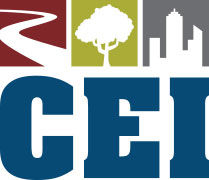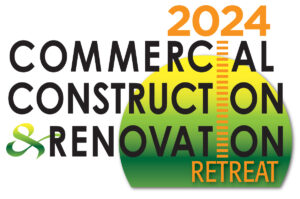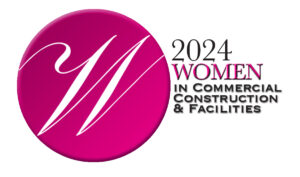The idea of maintaining a high-rise building might seem daunting, but it’s a crucial aspect of ensuring safety and longevity. Regular maintenance can significantly reduce the risk of costly repairs and unexpected breakdowns. By staying on top of maintenance tasks, you ensure a safer environment for residents and a more sustainable building overall.
Innovative solutions are reshaping the approach to building care, offering new tools and technologies that make these tasks more manageable. From drones that inspect hard-to-reach places to smart systems that predict equipment failure, the options available today are both fascinating and practical.
You might wonder if implementing these technologies will impact costs. Surprisingly, many of these solutions are designed to be cost-effective, aiming to reduce expenses in the long run. By adopting these modern techniques, you not only improve the quality of maintenance but also potentially save money.
Evaluating High-Rise Condition
Evaluating the condition of a high-rise building requires thorough attention to structural integrity, facade inspection, and the performance of electrical and plumbing systems. Each component plays a crucial role in ensuring the safety and functionality of the building.
Structural Integrity Assessment
To ensure a building’s safety, examining its structural integrity is essential. You need a comprehensive evaluation involving both visual inspections and advanced technologies like laser scanning or ground-penetrating radar. Experts in specialized high level building maintenance can identify issues such as cracks, settlement, or corrosion.
Regular inspections by qualified engineers can help catch potential problems early. Pay close attention to load-bearing elements like beams and columns. Regular maintenance schedules should be adhered to, ensuring that small issues do not escalate into larger concerns.
Facade Inspection Techniques
Routine facade inspections are key to maintaining both aesthetics and safety. Techniques like drone surveys or rope access can be used to reach high and hard-to-access areas. Utilize thermal imaging to detect areas of moisture ingress or insulation failure.
Look for signs of wear, such as spalling or erosion, which might indicate water infiltration or material degradation. Implementing a facade maintenance program can help manage repairs proactively, saving time and money in the long run. Safety gear and trained personnel are crucial when conducting these inspections.
Electrical and Plumbing Systems Review
Maintaining a high-rise’s internal systems is essential. Regular inspections of wiring, circuit breakers, and controls by certified professionals help prevent electrical hazards.
In plumbing, focus on leak detection and proper function of pipes and fixtures, using camera inspections when needed. Preventative maintenance avoids disruptions and ensures system reliability and efficiency.
Preventive and Predictive Maintenance Strategies
Effective high-rise building maintenance depends on proactive measures to prevent problems before they occur and predict them with advanced tools. By using technology and strategic planning, building managers can ensure building reliability and security.
Digitized Maintenance Tracking
Keeping accurate records is vital. Digital platforms help you record and access maintenance tasks effortlessly. These systems usually include features that notify you of upcoming tasks, track work history, and store important documentation.
With mobile access, information is always at your fingertips. Cloud-based applications ensure data accuracy and reduce the risk of losing important records.
Use of Building Maintenance Units
Building Maintenance Units (BMUs) are essential for maintaining the exterior of high-rise buildings. These units enable safe and efficient access to facade surfaces for cleaning, repairs, and inspections. Regular checks on BMUs ensure they are functioning properly and meet safety standards.
Modern BMUs are equipped with advanced features, offering precise operational control and enhanced safety measures to protect both workers and the building structure.
Incorporating Drones for Inspections
Drones offer a flexible and less intrusive method for building inspections. They capture high-resolution images and videos, providing detailed visual data without disturbing occupants. With drones, you can monitor difficult-to-reach areas safely and efficiently.
Advancements in drone technology allow for thermal imaging, adding another layer of accuracy in identifying issues like energy leaks or moisture buildup.
Predictive Analytics for Service Scheduling
Predictive analytics use data to forecast when maintenance should occur. By analyzing equipment performance data, these tools help you plan service activities before expensive failures happen. This can significantly extend the life of building systems.
Being data-driven means fewer unexpected outages and smarter resource allocation. Predictive analytics transform raw data into actionable insights.
Innovative Cleaning Solutions for High-Rises
Keeping high-rise buildings clean involves navigating complex challenges like limited access and environmental concerns. Advancements in technology offer new methods for maintaining cleanliness, such as automated systems and eco-friendly practices.
Automated Window and Facade Cleaning
Automation is revolutionizing high-rise cleaning. Robotic systems and drones can safely access hard-to-reach areas, reducing the need for human workers at height. These technologies boost safety while saving time and cutting costs compared to traditional methods.
Benefits:
- Increased safety
- Cost efficiency
- Time-saving
By integrating robotics, building maintenance teams can achieve cleaner exteriors without the limitations of manual labor.
Green Cleaning Practices
Eco-friendly cleaning solutions have led to more sustainable practices in high-rise maintenance. Many buildings now use biodegradable, non-toxic agents to reduce pollution and chemical runoff, benefiting both occupants and the environment.
Simple practices like using microfiber cloths over disposables or installing gray water systems can further reduce environmental impact, making a notable difference in sustainability.
Enhanced Air Quality Systems
Ensuring clean air within high-rises is crucial. Modern air filtration systems, like HEPA filters and advanced HVAC setups, play a vital role in maintaining good air quality. These systems can capture pollutants and improve ventilation, offering a healthier indoor environment.
Upgrading your building’s air quality systems can reduce allergens, odors, and even viral particles, making the space safer and more comfortable for everyone. Consider incorporating air purifiers with real-time monitoring features that give data on air conditions, adding an extra layer of assurance for residents and visitors alike.
Engagement and Training of Maintenance Staff
Enhancing the engagement and training of maintenance staff is essential for high-rise building care. Key areas include developing effective training programs, ensuring staff safety and well-being, and encouraging certifications and further education.
Implementing Effective Training Programs
Implementing comprehensive training programs is crucial. Start by assessing current skills and identifying areas for improvement.
Regular workshops and seminars keep skills sharp. Hands-on training is invaluable, allowing staff to learn real-world solutions to potential issues.
Consider using online modules for convenience, especially for theory-based learning. Interactive sessions foster better knowledge retention.
Mentorship programs pair less experienced staff with seasoned professionals, creating opportunities for growth. By investing in thorough training, you foster a more efficient and confident maintenance team.
Staff Safety and Well-being
Prioritizing staff safety and well-being is vital. Ensure that all team members have access to personal protective equipment (PPE) and are regularly trained on their proper use.
Implement periodic safety drills covering emergency situations like fires or structural failures. These drills prepare staff, reducing panic during actual emergencies.
Encourage an open dialogue where staff can freely express concerns about their safety or well-being. Implementing flexible work schedules or providing mental health resources supports overall well-being.
Certifications and Continuing Education
Encourage staff to pursue relevant certifications. Certified personnel bring specialized knowledge, adding value to their roles.
Look into certifications such as OSHA safety, HVAC, or electrician qualifications. Offer incentives like bonuses or tuition reimbursement to motivate staff participation.
Facilitate access to continuing education opportunities, such as online courses or night classes. This not only enhances skills but also keeps the team updated on the latest industry trends and technologies.
Conclusion
High-rise maintenance requires a blend of traditional practices and innovative solutions to enhance safety, efficiency, and sustainability. Technologies like drones, predictive analytics, and automated cleaning streamline tasks and reduce costs. Prioritizing staff training and support further strengthens the team’s ability to handle complex challenges.
These strategies not only extend the building’s lifespan but also create a safer, more comfortable environment. Embracing innovation ensures high-rise buildings remain resilient and well-maintained in today’s urban landscape.








 The 2024 virtual Men’s Round Table will be held Q4, 2024, date TBD.
The 2024 virtual Men’s Round Table will be held Q4, 2024, date TBD.













